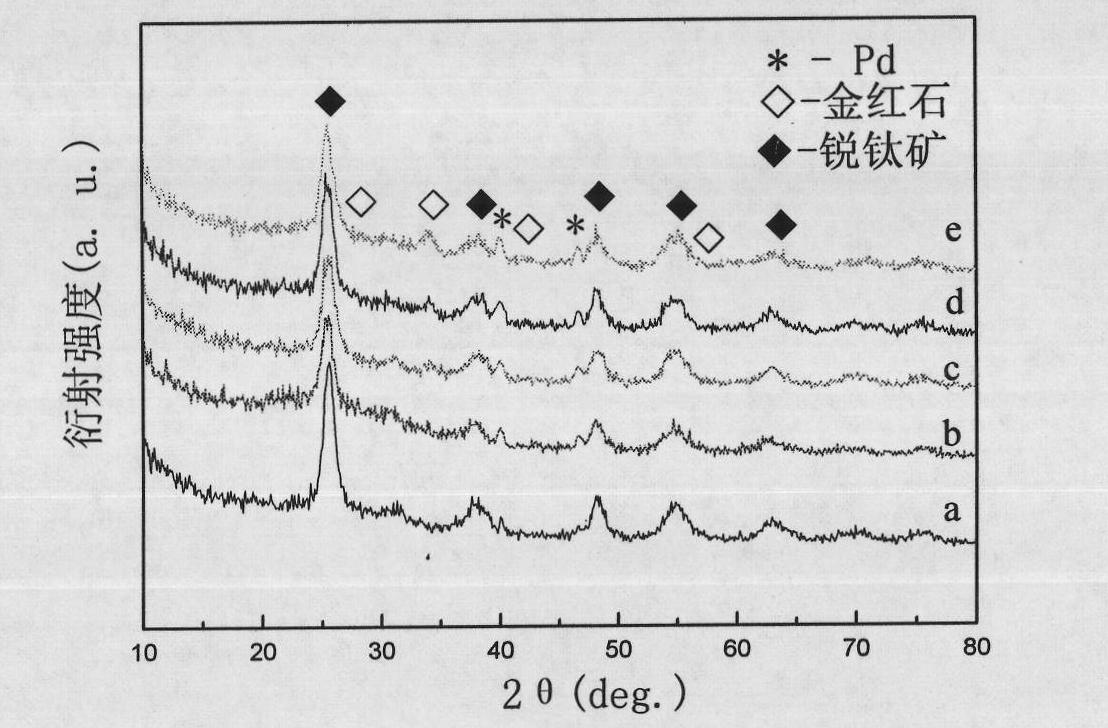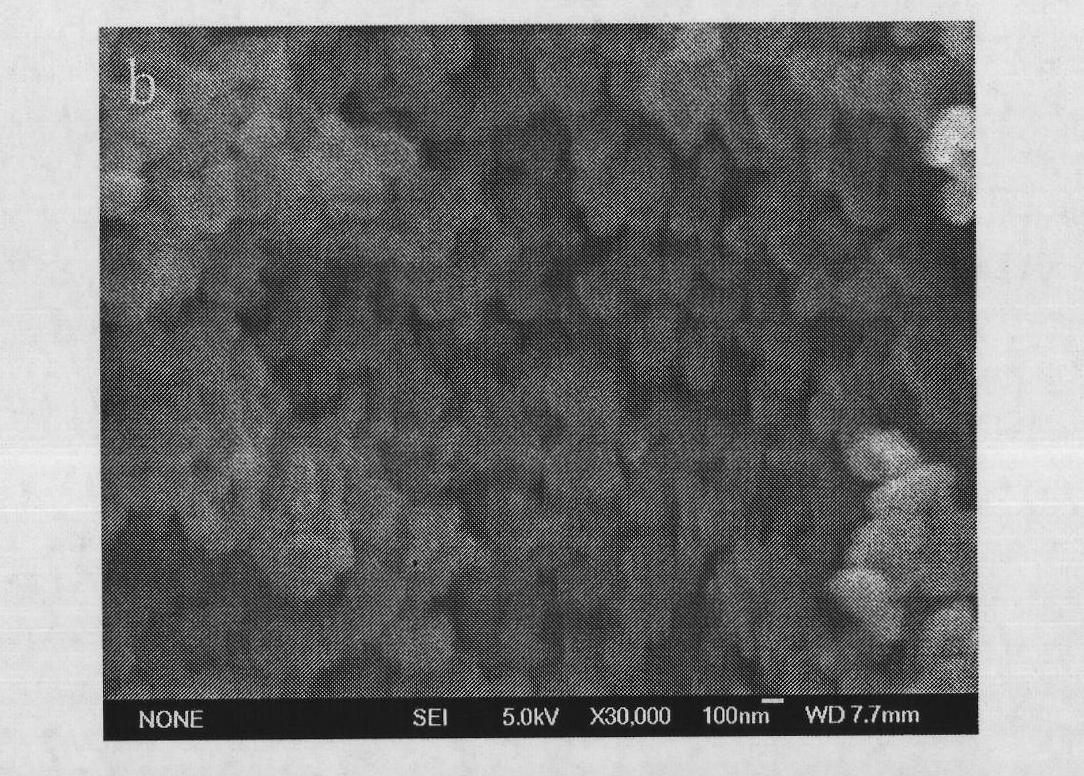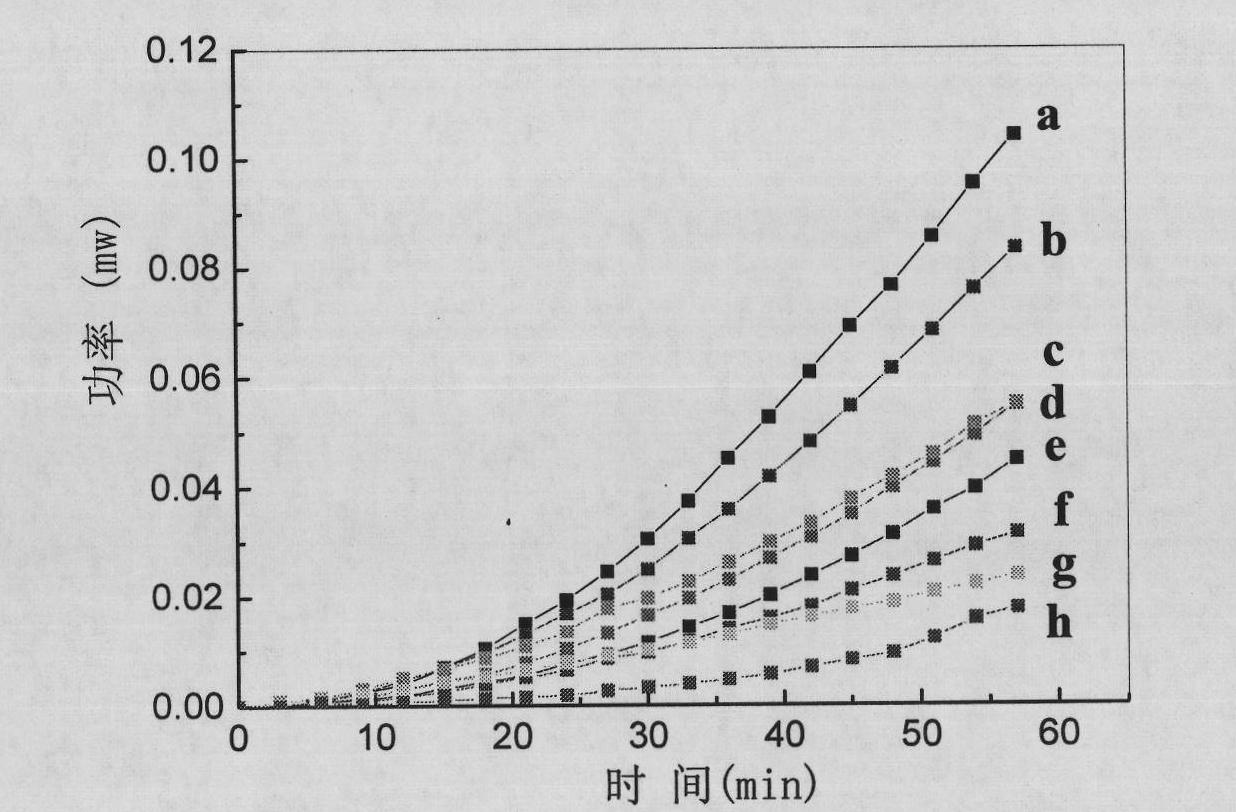Palladium-doped nano titanium dioxide anti-bacterial agent and preparation method and application thereof
A technology of nano-titanium dioxide and antibacterial agent, which is applied in the field of antibacterial materials, and can solve the problems of rare nano-titanium dioxide antibacterial agent
- Summary
- Abstract
- Description
- Claims
- Application Information
AI Technical Summary
Problems solved by technology
Method used
Image
Examples
Embodiment Construction
[0009] An antibacterial agent palladium-doped nano-titanium dioxide is characterized in that the palladium-doped amount is 1 to 5 mol%, and the palladium-doped nano-titanium dioxide particle average particle size is 6-12nm; it is made of PdCl 2 The solution was prepared by adding dropwise to a solution of tetrabutyl titanate in isopropanol at 30°C.
[0010] Preferably, the doping amount of palladium is 3 mol%.
[0011] A preparation method of nano titanium dioxide doped with antibacterial agent palladium, characterized in that the steps are as follows:
[0012] (1) PdCl 2 Dissolve in double distilled water to obtain solution A;
[0013] (2) Add tetrabutyl titanate dropwise into isopropanol, stir at room temperature for 30 minutes, and adjust the pH value to 3-4 with acid to obtain solution B;
[0014] (3) At 30°C, use a constant pressure funnel to drop the solution A prepared in step (1) into the solution B prepared in step (2), stir at room temperature, and then age to obt...
PUM
| Property | Measurement | Unit |
|---|---|---|
| The average particle size | aaaaa | aaaaa |
Abstract
Description
Claims
Application Information
 Login to View More
Login to View More - R&D
- Intellectual Property
- Life Sciences
- Materials
- Tech Scout
- Unparalleled Data Quality
- Higher Quality Content
- 60% Fewer Hallucinations
Browse by: Latest US Patents, China's latest patents, Technical Efficacy Thesaurus, Application Domain, Technology Topic, Popular Technical Reports.
© 2025 PatSnap. All rights reserved.Legal|Privacy policy|Modern Slavery Act Transparency Statement|Sitemap|About US| Contact US: help@patsnap.com



